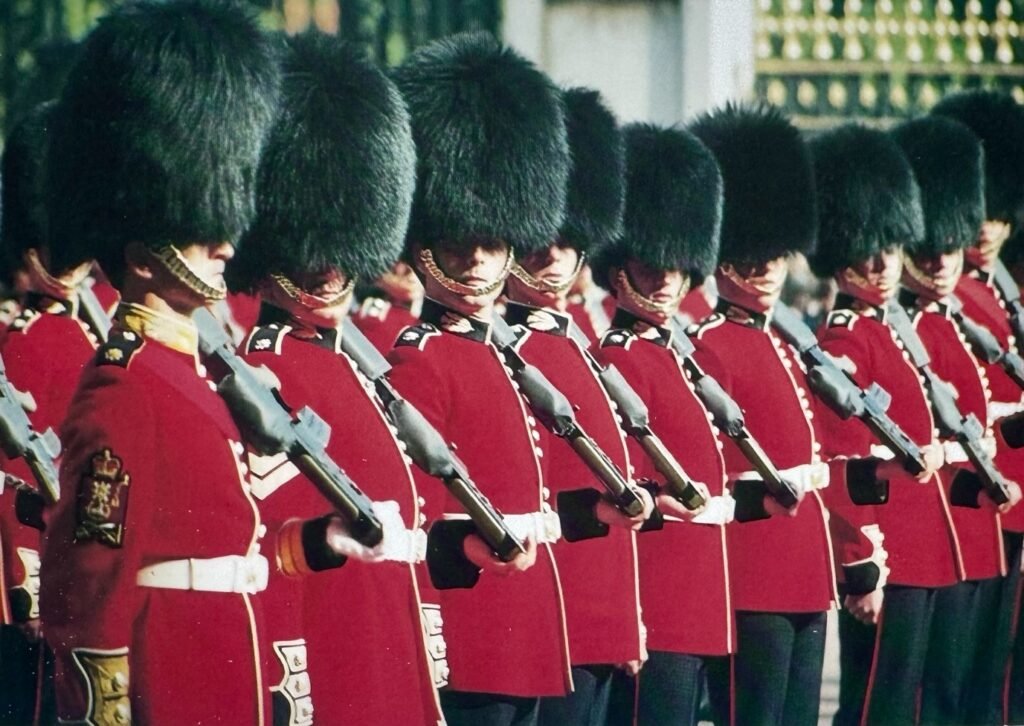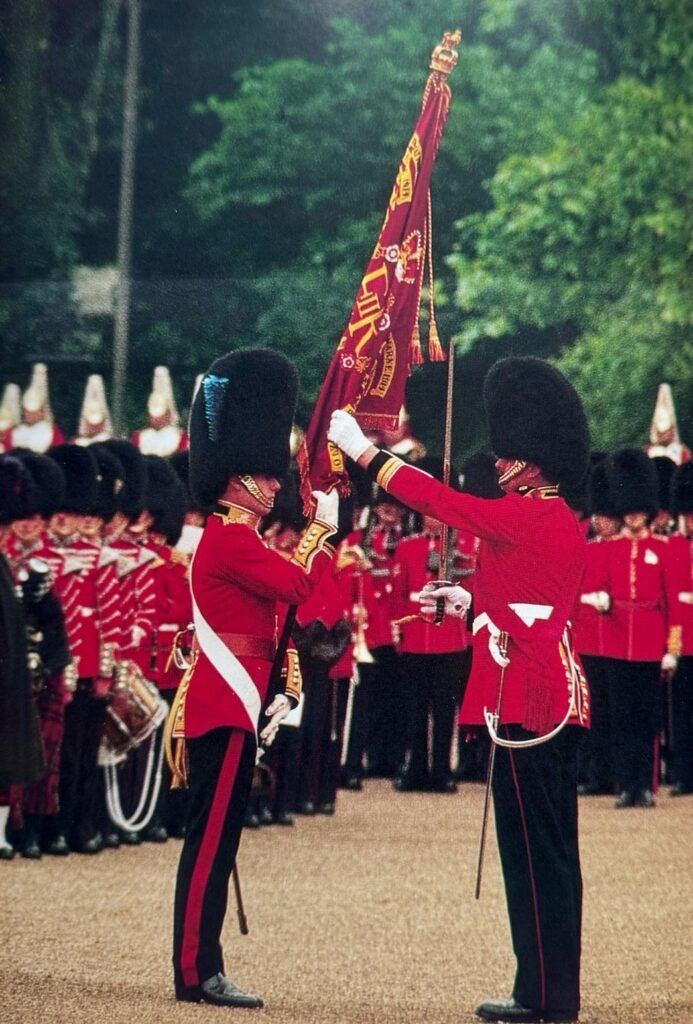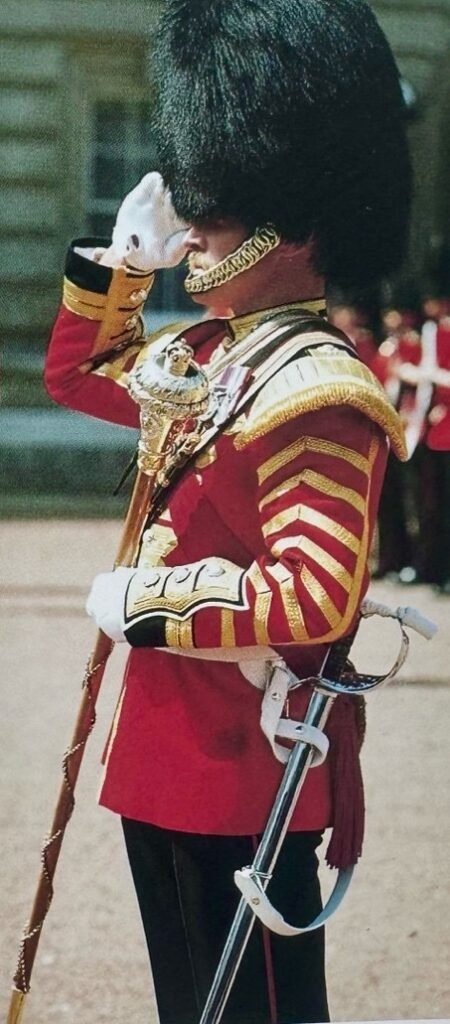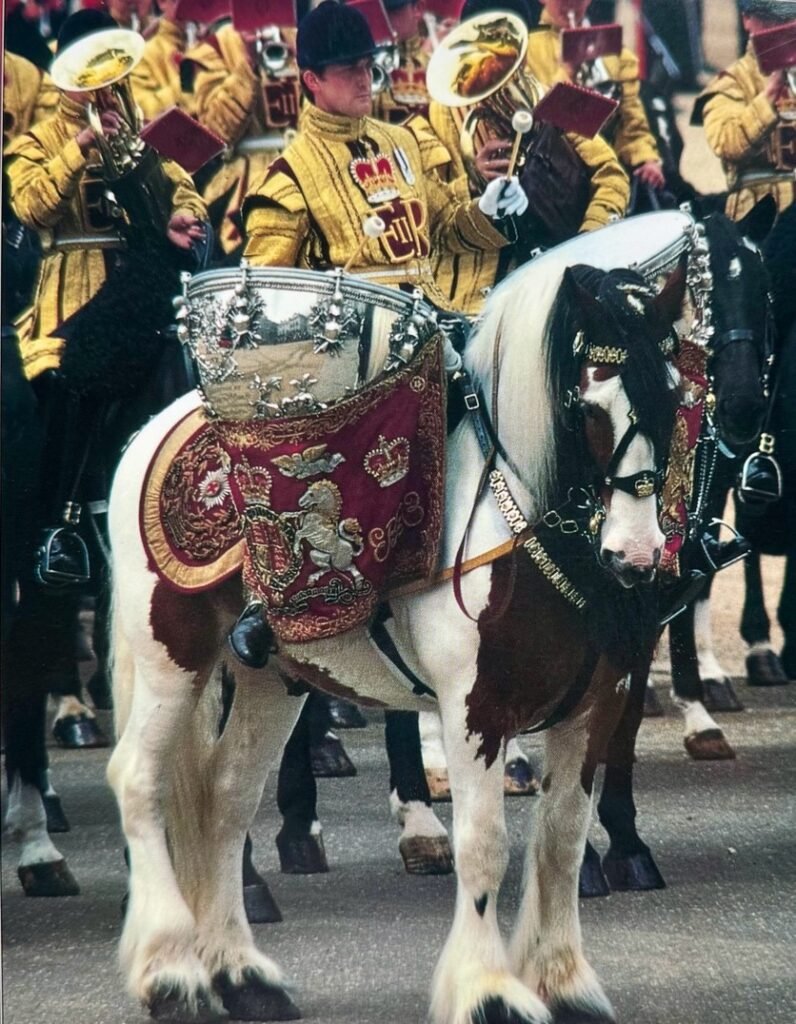
The Changing of the Guard is a historic British ceremony where soldiers hand over duty at royal palaces, symbolising tradition, honour and continuity since the 17th century.
History of Changing of the Guard at Buckingham Palace
The Body Guard of the Yeomen of the Guard was responsible for the Sovereign’s protection from Henry VII until the Civil War of 1642, when Charles I was guarded by loyal troops, while Charles II, when in exile, was protected by his Life Guards.
From the restoration onwards, the daily protection of the Sovereign became the duty of the Life Guards and the Foot Guards, particularly at the London palaces and Windsor and Edinburgh Castles.
In Tudor and Stuart times, Whitehall Palace was the official Royal residence, the largest palace in Europe at its height, but was destroyed by fire in 1698.

St James’s Palace became the official residence in 1698, maintaining its status as the centre of the Court, while Buckingham Palace became the permanent London residence of the Royal Family in 1837 when George III purchased the then Buckingham House for £21,000 (today’s real estate value is estimated at £3-5 billion, based on location, size and heritage).
Does the Changing of the Guard happen at all Royal Palaces?
No, the Changing of the Guard ceremony only happens at a select few palaces and castles where ceremonial guards are stationed.
Where can we see the Changing of the Guard ceremony?
Daily in summer (unless very wet). Alternate days (Mondays, Wednesdays & Fridays) in autumn and winter.

St James’s Palace:
The Senior detachment of The Queen’s Guard forms up at 11 a.m. before marching to Buckingham Palace.

The Colour is handed to the Ensign, a junior officer, who is responsible for carrying and protecting the flag.
Buckingham Palace:
At 11.30 a.m. the New Guard marches into the Palace Forecourt and the ceremony begins.
Whitehall:
The New Guard of the King’s Life Guard arrives at Horse Guards Arch at 11 a.m. (10 a.m. on Sundays).
Tower of London:
At 9.50 p.m. each evening, the ‘Ceremony of the Keys’ takes place.
Windsor Castle:
Guard mounting at 11.30 a.m. (days vary).

What regiments are the Guards from at Buckingham Palace?
The Guards are from elite regiments of the Household Division, which is made up of seven illustrious Regiments, renowned and respected around the world for their self-discipline, elegance and reliability. These guards are equally at home on Horse Guards Parade or on operational duty. These regiments are part of the British Army, and they are grouped into two main branches:
Regiment | Collar Badge | Plume (Feather) | Button Grouping |
Coldstream Guards | Rose, Thistle, Shamrock | Right side (red) | Pairs |
Scots Guards | Thistle | None | Groups of 3 |
Irish Guards | Shamrock | Right side (blue) | Groups of 4 |
Welsh Guards | Leek | Left side (green/white) | Groups of 5 |
Two regiments of mounted Guards from the Household Cavalry:
Regiment | Uniform Features | Duties |
Life Guards | Red tunics, white plumes | Mounted guard, ceremonial |
Blues and Royals | Blue tunics, red plumes | Mounted guard, ceremonial |
The Musicians: The Trumpeters, Drummers, Pipers and massed bands of the Guards

The seven Regiments of the Household Division maintain bands of accomplished musicians. Foot Guards bands consist of 46 musicians each, while Household Cavalry bands are 34 members strong. Additionally, Foot Guards battalions have a Corps of Drums with six to eight drummers, about a dozen pipers, and 25 pipers for the Scots and Irish Guards. Historically, the Corps of Drums conveyed commanders’ orders and played morale-boosting tunes, being part of their battalions rather than regimental bands.
The Life Guards used trumpet calls and drum signals for orders as early as the 17th century. Trumpets, considered “Royal” instruments, still herald Royal processions and ceremonial parades. Household Cavalry trumpeters and Foot Guards’ Drum-Majors serve as State musicians in special dress during Royal presence, otherwise functioning as regimental musicians.
Can you see Changing of the Guard for Free?
Yes, the Changing of the Guard ceremony at Buckingham Palace and along the parade route is free to watch. FOF Bike Tour guides will position you in the best place to see the ceremony.
How long does it take to see Changing of the Guard?
The main event at Buckingham Palace takes about 30 minutes and usually begins at 11:00 am.
The mounted guard change at Horse Guards Parade takes about 20 minutes and is less crowded. Happens daily at 11:00 am
Where is the best place to see the Changing of the Guard?
Standing right at Buckingham Palace railings provides the closest view of the ceremony inside the forecourt. You’ll be able to see the handover of duties between the Old and New Guards up close. This area becomes very crowded, especially during peak tourist seasons.
At 10:30 AM, a detachment of the Old Guard forms up in Friary Court at St. James’s Palace and is inspected before marching to Buckingham Palace. Observing this part of the ceremony offers a unique perspective and is typically less crowded.
For a less crowded experience, consider starting at Wellington Barracks on Birdcage Walk. Here, you can watch the New Guard assemble and be inspected while enjoying music from the regimental band. The New Guard departs from the barracks at approximately 10:57 AM, marching towards Buckingham Palace. This spot offers a more relaxed atmosphere and is ideal for photography.
Visitor Information
The Guards Museum, Wellington Barracks, Birdcage Walk, London, SW1E 6HQ.
Museum: 020 7414 3428
The Household Cavalry Museum, Horse Guards, Whitehall, London SW1A 2AX
Telephone: 020 7930 3070
